CT angiography: current technology and clinical use
- PMID: 20609871
- PMCID: PMC2901244
- DOI: 10.1016/j.rcl.2010.02.006
CT angiography: current technology and clinical use
Abstract
Since 1958, catheter angiography has assumed the role of gold standard for vascular imaging, despite the invasive nature of the procedure. Less invasive techniques for vascular imaging, such as computed tomographic angiography (CTA), have been developed and have matured in conjunction with developments in catheter arteriography. In a few cases, such as imaging, the aorta and the pulmonary arteries, CTA has supplanted catheter angiography as the gold standard. The expanding role of CTA emphasizes the need for deep, broad-based understanding of physical principles. This review describes CT hardware and associated software for angiography. The fundamentals of CTA physics are complemented with several clinical examples.
Copyright 2010 Elsevier Inc. All rights reserved.
Figures


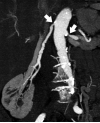






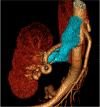

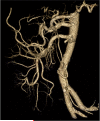
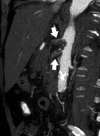


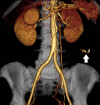

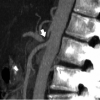

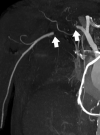
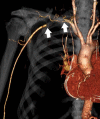
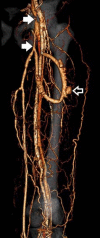
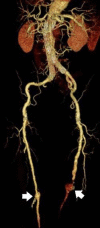

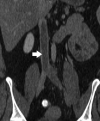

Similar articles
-
[The importance of multidetector computed tomography in the vascular imaging].Orv Hetil. 2009 Jul 19;150(29):1351-60. doi: 10.1556/OH.2009.28664. Orv Hetil. 2009. PMID: 19581168 Review. Hungarian.
-
Three-dimensional spiral computed tomographic angiography: an alternative imaging modality for the abdominal aorta and its branches.J Vasc Surg. 1993 Oct;18(4):656-64; discussion 665. J Vasc Surg. 1993. PMID: 8411473
-
3D fusion of coronary CT angiography and CT myocardial perfusion imaging: Intuitive assessment of morphology and function.J Cardiovasc Comput Tomogr. 2017 Nov;11(6):437-443. doi: 10.1016/j.jcct.2017.09.003. Epub 2017 Sep 5. J Cardiovasc Comput Tomogr. 2017. PMID: 28916411
-
Spiral CT: vascular applications.Eur J Radiol. 1998 Aug;28(1):18-29. doi: 10.1016/s0720-048x(98)00009-6. Eur J Radiol. 1998. PMID: 9717621 Review.
-
Multislice spiral computed tomography angiography of mesenteric arteries.Lancet. 2001 Aug 25;358(9282):638-9. doi: 10.1016/S0140-6736(01)05786-5. Lancet. 2001. PMID: 11530154
Cited by
-
Low-iodine 40-keV virtual monoenergetic CT angiography of the lower extremities.Front Cardiovasc Med. 2023 Oct 23;10:1276738. doi: 10.3389/fcvm.2023.1276738. eCollection 2023. Front Cardiovasc Med. 2023. PMID: 37942065 Free PMC article.
-
Effect of CTA Tube Current on Spot Sign Detection and Accuracy for Prediction of Intracerebral Hemorrhage Expansion.AJNR Am J Neuroradiol. 2016 Oct;37(10):1781-1786. doi: 10.3174/ajnr.A4810. Epub 2016 May 19. AJNR Am J Neuroradiol. 2016. PMID: 27197985 Free PMC article.
-
Diagnostic Accuracy of Imaging Modalities in the Evaluation of Vascular Invasion in Pancreatic Adenocarcinoma: A Meta-Analysis.World J Oncol. 2013 Apr;4(2):74-82. doi: 10.4021/wjon657w. Epub 2013 May 6. World J Oncol. 2013. PMID: 29147335 Free PMC article.
-
Multimodal imaging approach for the diagnosis of intracranial atherosclerotic disease (ICAD): Basic principles, current and future perspectives.Interv Neuroradiol. 2024 Feb;30(1):105-119. doi: 10.1177/15910199221133170. Epub 2022 Oct 19. Interv Neuroradiol. 2024. PMID: 36262087 Free PMC article. Review.
-
Transforming pediatric imaging: The role of four-dimensional flow magnetic resonance imaging in quantifying mesenteric blood flow.World J Radiol. 2025 Jun 28;17(6):106582. doi: 10.4329/wjr.v17.i6.106582. World J Radiol. 2025. PMID: 40606042 Free PMC article.
References
-
- Fleischmann D, Rubin GD. Quantification of intravenously administered contrast medium transit through the peripheral arteries: implications for CT angiography. Radiology. 2005;236(3):1076–1082. - PubMed
-
- Ligon BL. Biography: history of developments in imaging techniques: Egas Moniz and angiography. Semin Pediatr Infect Dis. 2003;14(2):173–181. - PubMed
-
- Mueller RL, Sanborn TA. The history of interventional cardiology: cardiac catheterization, angioplasty, and related interventions. Am Heart J. 1995;129(1):146–172. - PubMed
-
- Waugh JR, Sacharias N. Arteriographic complications in the DSA era. Radiology. 1992;182(1):243–246. - PubMed
-
- Scoutt LM, Zawin ML, Taylor KJ. Doppler US. Part II. Clinical applications. Radiology. 1990;174(2):309–319. - PubMed
Publication types
MeSH terms
Grants and funding
LinkOut - more resources
Full Text Sources
Other Literature Sources
Medical

